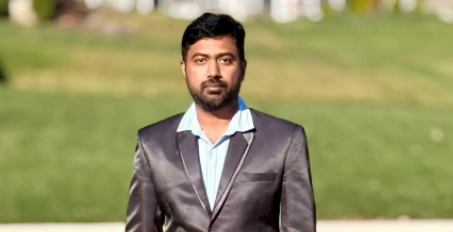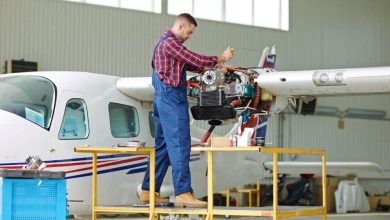Aravinda Bommareddy: Pioneering Materials Engineering in Advanced Driver Assistance Systems (ADAS)

Aravinda Bommareddy, a Principal Engineer at ZF Global Electronics, stands at the forefront of cutting-edge advancements in the automotive industry. With over a decade of experience in materials engineering, Aravinda plays a pivotal role in the development of Advanced Driver Assistance Systems (ADAS) and autonomous vehicle safety technologies. His extensive expertise spans across a range of materials, including metals, plastics, thermal interface materials, EMC/EMI gaskets, and thermoset adhesives, to ensure the optimal performance of critical safety electronics that are transforming the future of the autonomous world.
A Journey Rooted in Innovation and Expertise
Aravinda’s career is built on a foundation of academic excellence and practical experience. He holds two advanced degrees in materials engineering, specializing in the study of novel materials for automotive applications. His research journey began at the University of New South Wales (UNSW) in Sydney, Australia, where he developed an aluminium-scandium
(Al-Sc) alloy that exhibited improved grain strength at high temperatures—a crucial attribute for materials used in automotive components. This research was sponsored by the Australian Research Centre of Excellence in Design in Light Alloys, and Aravinda’s findings were published in the Journal of Alloys and Compounds.
Further expanding his expertise, Aravinda pursued a master’s degree in the United States, focusing on high-strength low-carbon steels and rare-earth alloy combinations. His research
was funded by the Office of Naval Research, where he investigated electrolytic dissolution in steels and explored the impact of rare earth oxides on steel strength. The results of this research were published in the International Journal of Metal Casting, solidifying Aravinda’s reputation as an expert in materials science.
In his current role at ZF Global Electronics, Aravinda’s work is critical in advancing the technology behind ADAS and autonomous driving. These systems, which include sensors such as forward-facing cameras, radars, and LiDAR, rely on high-performance materials to ensure they operate flawlessly in the harsh environments of modern vehicles. As a materials engineer specializing in safety electronics, Aravinda evaluates and tests various materials—including metals, plastics, and polymer composites—to ensure the longevity, reliability, and functionality of these systems.
Driving Innovation in ADAS Technology
Aravinda’s passion for advancing ADAS technology stems from his deep understanding of the materials required to make these systems both effective and durable. In the realm of autonomous driving, ADAS plays an integral role in preventing accidents and saving lives. Systems like Adaptive Cruise Control (ACC), Lane Departure Warning (LDW), and Forward Collision Warning (FCW) are designed to assist drivers in recognizing hazards and taking action before accidents occur.
As vehicles become increasingly reliant on these technologies, the materials that house and protect ADAS sensors must meet rigorous standards. For example, Aravinda works extensively with high thermal conductivity aluminium alloys, which are used to create the housing for electronic sensors. The ability of these alloys to dissipate heat is essential in maintaining the performance of sensors, especially in hot environments within a vehicle’s engine compartment. This expertise is crucial as ADAS technology continues to evolve, requiring materials that can withstand both high temperatures and mechanical stress without compromising sensor function.
In addition to metals, Aravinda is deeply involved in the development and testing of adhesives used in the assembly of sensor modules. One of the key challenges in sensor development is ensuring that the lens-to-metal mount alignment remains stable, even when the camera experiences vibrations or thermal expansion. Aravinda’s expertise in adhesive bonding ensures that these critical components maintain their precision, a task made more complex by the need for alignment accuracy within microns (±5um). He has utilized advanced techniques such as Raman spectroscopy and Scanning Electron Microscopy (SEM) to analyze and resolve issues like adhesive failure in manufacturing facilities, ensuring the durability and accuracy of the sensors.
Overcoming Challenges in Materials Engineering
Throughout his career, Aravinda has faced numerous challenges in materials engineering, particularly when addressing the performance of materials under extreme conditions. One of the most notable challenges he encountered was adhesive failure in the manufacturing of ADAS cameras. The alignment of the camera lens to the metal mount is critical for the proper functioning of the sensor, and any misalignment can result in camera failure.
Aravinda used Raman spectroscopy to identify contamination from silicone as the root cause of the failure, proving the necessity of clean, high-quality materials in sensor production.
Another significant challenge is the development of materials that can withstand high temperatures while maintaining their performance over time. Aravinda’s research into thermal interface materials, which are used in camera modules to ensure effective heat dissipation, plays a vital role in the long-term durability of ADAS sensors. As vehicles become smarter and more autonomous, the demand for these materials will only grow, making Aravinda’s work increasingly important.
Contributing to the Future of Transportation
Looking ahead, Aravinda’s vision is to continue advancing the field of materials engineering for ADAS technologies. He is committed to ensuring that all components within autonomous vehicles—from camera housings to electronic control units—function flawlessly, with minimal risk of failure. He aims to contribute to the development of sustainable materials that reduce
carbon footprints, helping to create a future where autonomous vehicles not only improve safety but also contribute to a greener planet.
As part of his ongoing work, Aravinda is also focused on reducing the environmental impact of materials used in ADAS systems. By developing lighter, more efficient materials, he is contributing to the reduction of fuel consumption and emissions in vehicles. This aligns with his broader goal of contributing to the sustainability of the automotive industry while advancing the technology that keeps drivers and passengers safe.
The Importance of ADAS in the Future of Transportation
ADAS technology has already begun to transform the way we drive, with more and more vehicles being equipped with safety features designed to assist drivers and prevent accidents. According to the National Highway Traffic Safety Administration (NHTSA), driver error contributes to 94% of crashes, making ADAS systems an essential tool in reducing traffic fatalities. As technology advances, the potential for ADAS to save lives continues to grow, and materials engineers like Aravinda Bommareddy are key players in ensuring that these systems are reliable, safe, and effective.
Conclusion
Aravinda Bommareddy’s work in materials engineering is helping to shape the future of autonomous driving. His expertise in metals, polymers, adhesives, and failure analysis plays a critical role in the development of ADAS technologies that will make transportation safer and more sustainable for future generations. With his ongoing commitment to innovation, Aravinda is poised to continue making significant contributions to the automotive industry, ensuring that ADAS technologies reach their full potential in preventing accidents and saving lives.





